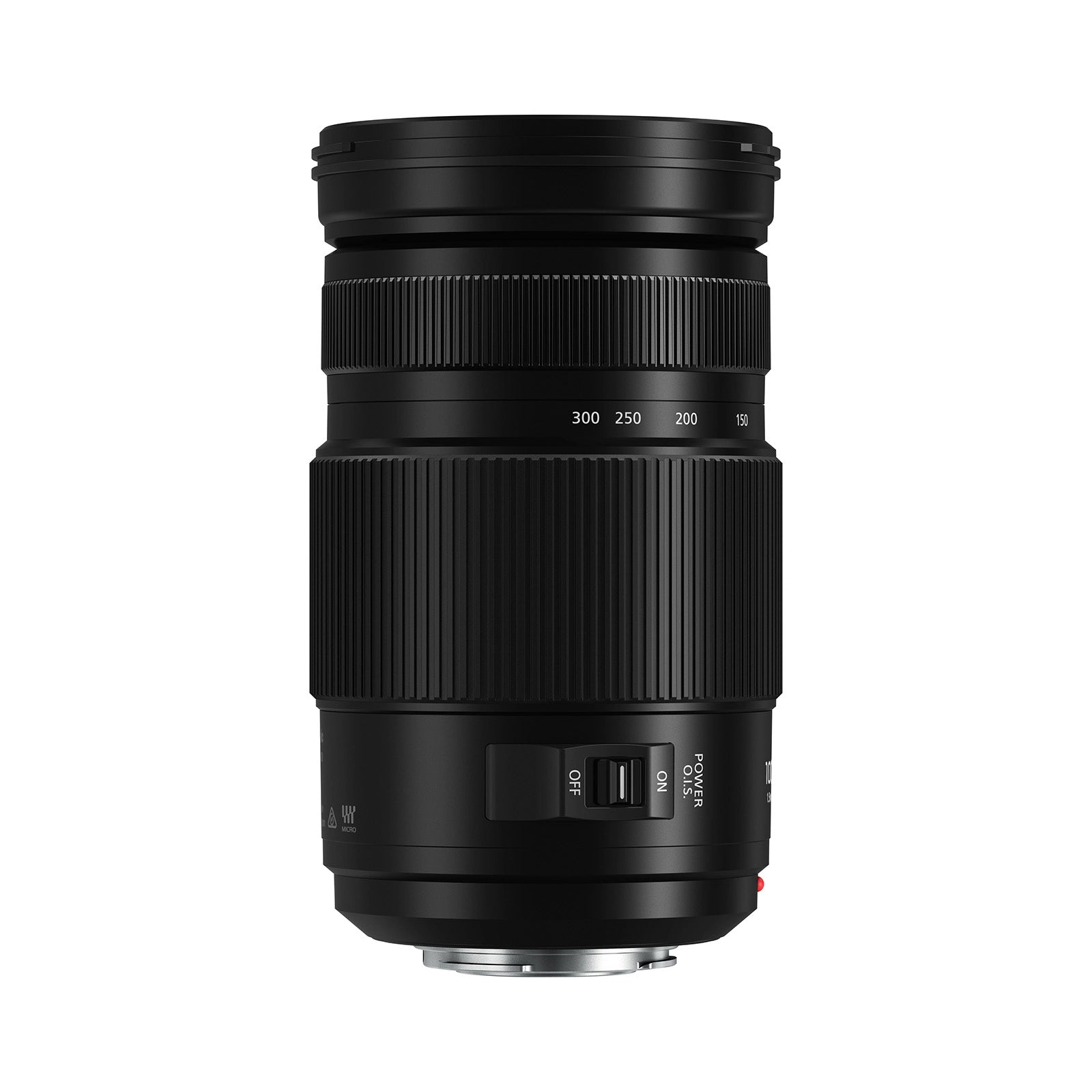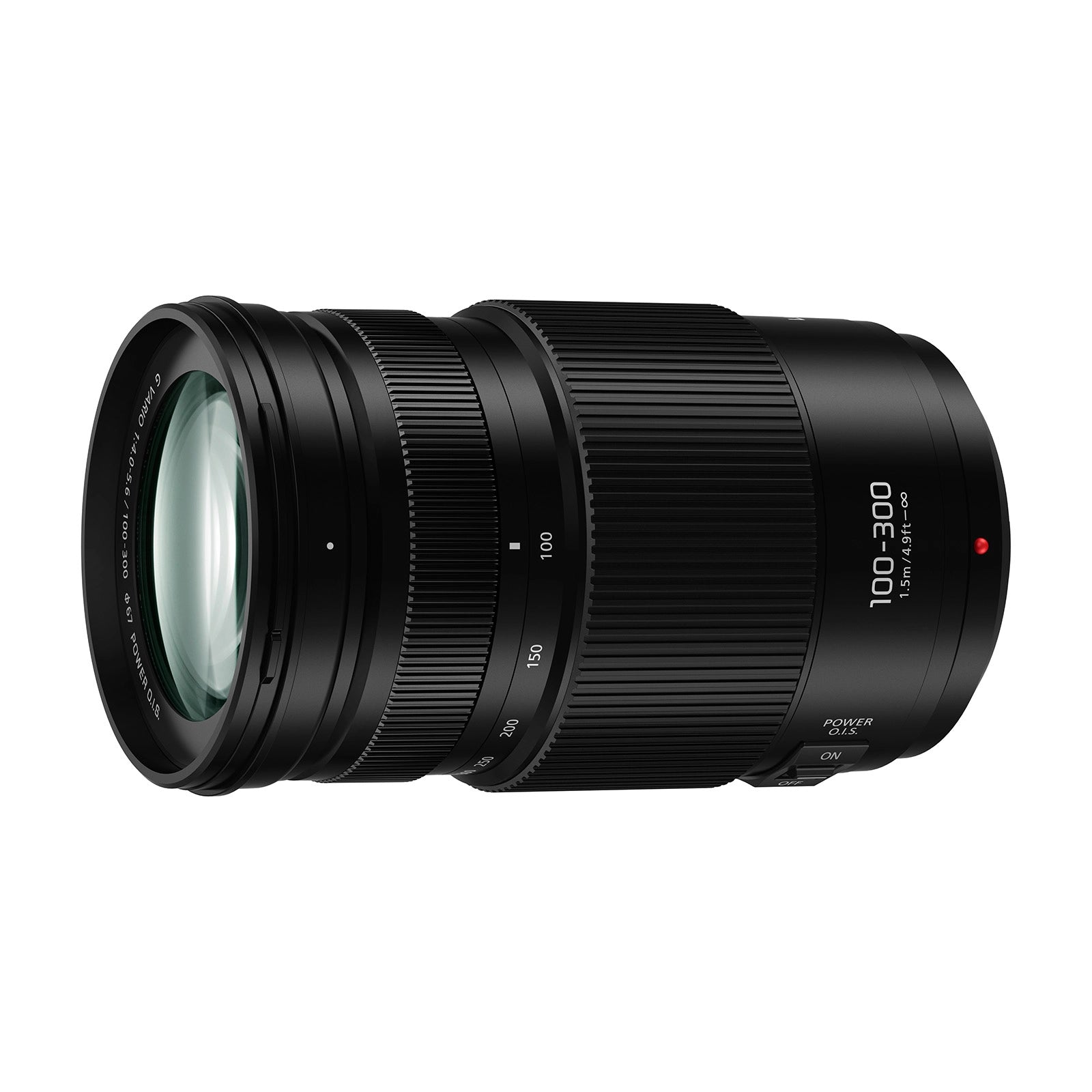Product Description
Elevate your photography with the Panasonic 100-300mm f/4.0-5.6 II Lumix G Vario Lens.
A versatile, high-performance zoom lens designed specifically for the Micro Four Thirds system. With an impressive focal length range of 100-300mm, this lens offers a 35mm equivalent of 200-600mm, making it ideal for capturing distant subjects with unparalleled clarity and detail. Whether you're photographing wildlife, sporting events, or action-packed scenes, this lens is built to deliver precision, speed, and sharpness in every shot.

Superior Autofocus for Dynamic Scenes
Optimized for Panasonic's Lumix cameras, the 100-300mm f/4.0-5.6 II lens features a high-speed linear autofocus motor that works seamlessly with the camera’s 240 fps Contrast Detection AF system. This enables rapid, accurate focusing, ensuring you never miss a fleeting moment. The enhanced autofocus tracking performance, especially during zooming, makes this lens perfect for fast-moving subjects, ensuring every shot is in perfect focus.

Built to Conquer Any Environment
The Panasonic 100-300mm f/4.0-5.6 II lens is designed to withstand the toughest outdoor conditions. With splashproof and dustproof construction, this lens can handle rain, sand, and harsh environments, making it the perfect companion for adventure and nature photographers who need reliable gear that stands up to the elements. You can shoot with confidence in any weather without compromising performance.

POWER O.I.S. for Sharp, Blur-Free Images
Worried about camera shake? This lens is equipped with POWER Optical Image Stabilizer (O.I.S.), which takes stabilization to the next level, helping you achieve sharp, blur-free images even in challenging shooting conditions. Whether you’re shooting handheld or in low-light environments, this advanced image stabilization technology compensates for both small and large movements, ensuring crisp, clear results every time.

4K-Ready for Professional-Quality Video
This lens isn’t just for still photography; it’s also fully optimized for 4K video recording. Smooth aperture transitions and a nearly silent autofocus motor allow for flawless video capture, making it ideal for content creators who demand high-quality visuals and professional-grade sound. Whether you're filming in 4K or Full HD, the fast and precise autofocus ensures that your subject remains in sharp focus throughout.

Perfect for Professionals and Enthusiasts Alike
Whether you're an experienced photographer or a passionate enthusiast, the Panasonic 100-300mm f/4.0-5.6 II Lumix G Vario Lens is an essential addition to your gear. It offers the perfect blend of high-performance optics, durable build quality, and versatile functionality, making it a reliable choice for all types of photography and videography.
Capture the world in stunning detail and elevate your creative vision with this powerful, feature-packed zoom lens.
Payment & Security
Your payment information is processed securely. We do not store credit card details nor have access to your credit card information.



















